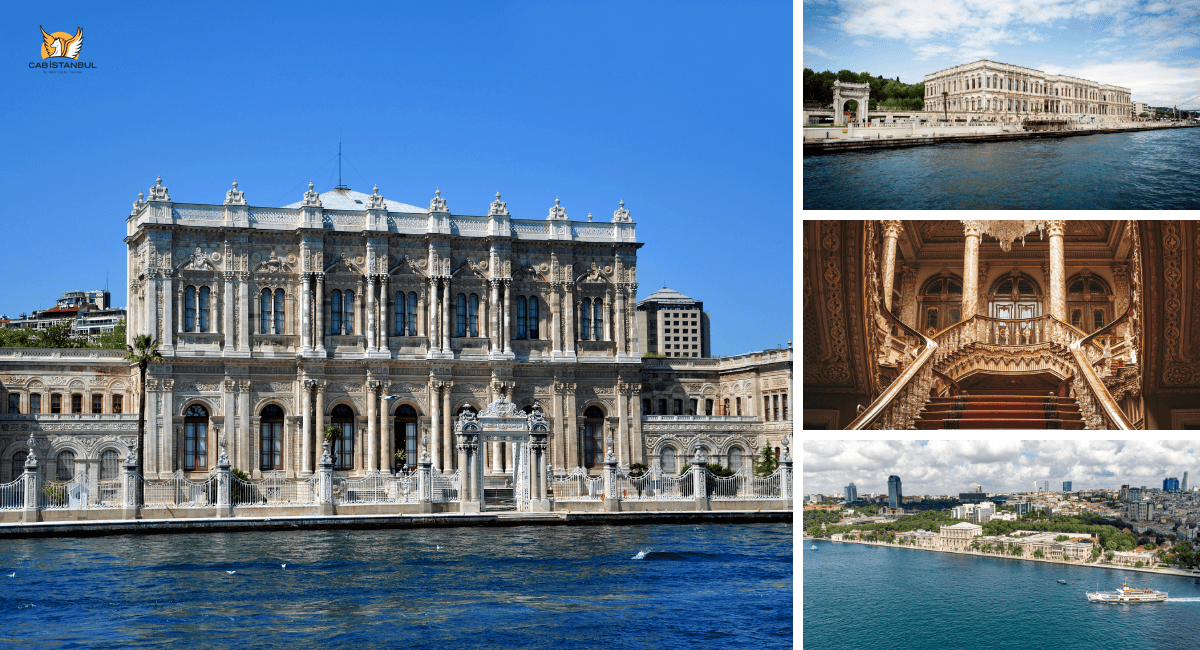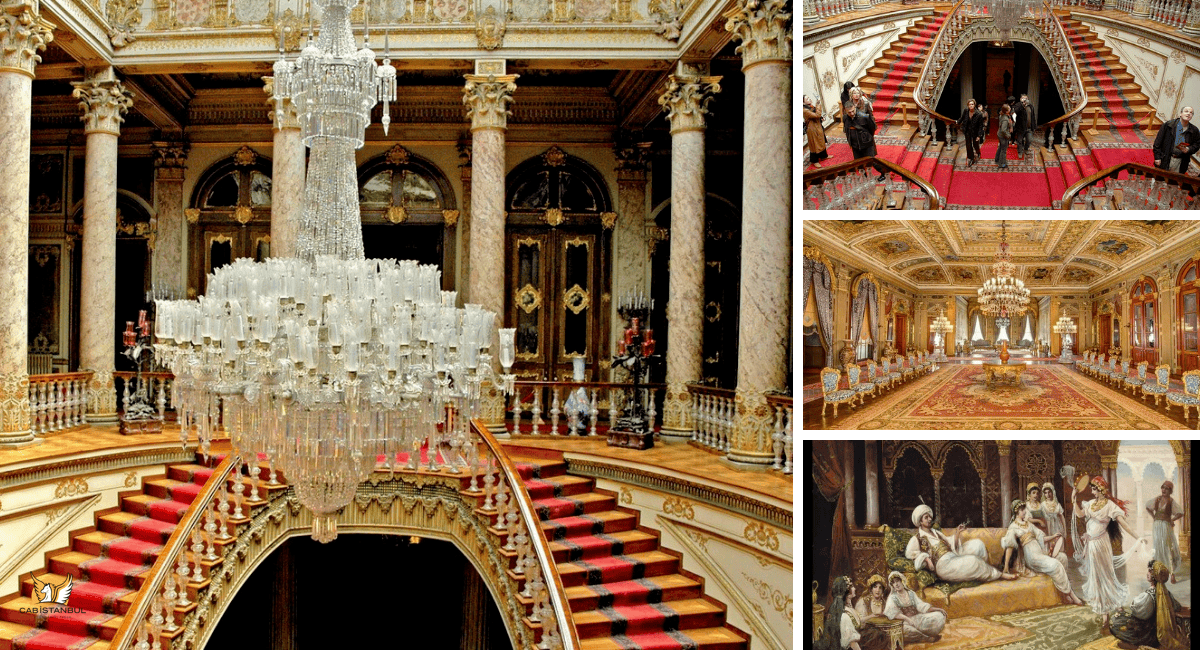Dolmabahçe Palace Museum
2025-12-31

Dolmabahçe Palace
Dolmabahçe Palace, a timeless symbol of elegance and history. Nestled along the Bosphorus Strait, Dolmabahçe Palace is a masterpiece blending Ottoman Baroque, Neoclassical, and European styles. Commissioned by Sultan Abdulmecid I and designed by renowned architects Garabet and Nigoğayos Balyan, this opulent residence symbolizes the Ottoman Empire's transition into modernity. Its grand halls, including the iconic Ceremonial Hall, and lush Italian-designed gardens offer visitors a glimpse into a world of regal sophistication.
The palace served as the administrative center for six sultans and later became the residence of Mustafa Kemal Ataturk, the founder of modern Turkey. Every room, corridor, and intricate detail tells stories of pivotal moments in Turkish history. From the Sultan’s Harem to the gardens, each corner echoes with the footsteps of those who shaped a nation.
Dolmabahçe Palace is more than an architectural wonder—it’s a journey through Turkey’s cultural and political evolution. Visitors leave not just with memories of its splendor but with a profound connection to Turkey’s heritage and the timeless elegance of the Ottoman Empire. A must-see landmark for anyone exploring Istanbul.
If you're interested in embarking on the Dolmabahçe Palace Tour and exploring other captivating sites in Istanbul, consider optimizing your day with the car and driver service offered by Cab Istanbul. For seamless transitions from the airport and around the city, explore our Istanbul airport transfer services.
Dolmabahçe Palace
Dolmabahce Palace Tour
Dolmabahçe Palace signifies the evolving identity of the Ottoman Empire during the 19th century. Its construction, which commenced on June 13, 1843, culminated on June 7, 1856, presenting a structure that spans 110 thousand square meters, graced with unrivaled Bosphorus views. Nestled in the Beşiktaş coastal area, the palace's location once played a crucial role in maritime activities, acting as a refuge for ships since antiquity. Both the Byzantine rulers recognized its strategic importance, erecting royal edifices in its proximity.
Dolmabahce Palace History
Dolmabahçe Palace is a remarkable symbol of the Ottoman Empire’s modernization in the 19th century. Commissioned by Sultan Abdulmejid I and constructed between 1843 and 1856, the palace was designed by the renowned Balyan family of architects. Replacing the Beşiktaş Sahil Palace, its creation marked a departure from the medieval Topkapı Palace, embodying contemporary European influences blended with traditional Ottoman aesthetics.
Built at an astounding cost of five million Ottoman gold liras, equivalent to $1.9 billion in today’s value, the palace’s construction placed a significant strain on the empire’s finances, contributing to economic challenges that eventually led to foreign financial oversight. Despite this, Dolmabahce emerged as a beacon of luxury, adorned with crystal chandeliers, ornate carpets, and intricate tile stoves, showcasing the empire's artistic and architectural prowess.
The palace served as the administrative center of the Ottoman Empire from 1856 to 1922 and was home to six sultans. It also holds a special place in modern Turkish history as the residence of Mustafa Kemal Ataturk, the founder of the Turkish Republic. Atatürk spent his final days in the palace, passing away there on November 10, 1938.
Today, Dolmabahçe Palace is managed by the Directorate of National Palaces and stands as a testament to Turkey’s rich cultural heritage, drawing visitors from around the world to marvel at its opulence and historical significance.
Giant Chandelier

Dolmabahce Clock Tower
The Dolmabahce Clock Tower, a striking landmark situated at the entrance of Dolmabahce Palace, exemplifies 19th-century Ottoman architecture infused with European influences. Built between 1890 and 1895 during Sultan Abdulhamid II's reign, this 27-meter-tall tower features four clock faces and ornate Baroque-style detailing. Its precision mechanisms were crafted by master French clockmaker Jean-Paul Garnier. The clock tower not only served as a timekeeping marvel but also symbolized the empire's embrace of modernization. Positioned by the Bosphorus, it enhances the grandeur of Dolmabahce Palace, making it an unmissable attraction for visitors exploring Istanbul's historical treasures.
Dolmabahce Palace Harem
The Dolmabahce Palace Harem was the private residence of the Ottoman sultans and their families, offering a glimpse into their intimate daily lives. This secluded section, marked by elegant Baroque and Rococo influences, housed luxurious chambers, including the Sultan's private quarters and the women’s apartments. Decorated with stunning frescoes, intricate woodwork, and opulent furnishings, the Harem reveals the grandeur of Ottoman royalty. It also served as a place of education and governance for the imperial family. Exploring the Harem allows visitors to connect with the cultural richness and traditions of Ottoman domestic life.
Dolmabahce Gardens
The Dolmabahce Gardens are a serene escape, blending Ottoman elegance with European landscaping artistry. Spanning the palace grounds, the gardens were meticulously designed with geometric patterns, ornamental ponds, sculptures, and exotic plants sourced from Asia, Europe, and America. The gardens are divided into four sections: Hasbahce, Kusluk, Harem, and the Crown Garden, each complementing the nearby palace areas. Renowned European horticulturists like Fritz Venze and Koch Munika contributed to their beauty. Visitors can stroll through these lush landscapes, experiencing the harmony of nature and architecture that defines the Dolmabahce Palace.
Dolmabahce Museum
Ottoman Palace
The Evolution of Besiktas Sahil and Dolmabahce: The Besiktas coastline held great significance for the Ottoman sultans, evolving over centuries from a naval hub to a luxurious residential and administrative area. During the late 15th and early 16th centuries, Sultan Bayezid II initiated the construction of a royal mansion, establishing the region as a retreat for Ottoman rulers. Sultan Suleiman the Magnificent further elevated the area’s status by commissioning a summer palace overlooking the verdant Besiktas Garden, marking it as a site of regal importance.
By the 17th century, the allure of the Besiktas coastline had grown, as evidenced by Sultan Ahmed I’s creation of a private garden, achieved through the reclamation of land previously part of a gulf. This endeavor gave rise to the name Dolmabahce, meaning "filled garden." The Tiled Kiosk and Sahil Palace became iconic landmarks, with the latter undergoing continual expansions to accommodate the sultans’ needs.
The 18th century saw the Besiktas Sahil Palace emerge as the second most significant royal residence after Topkapi Palace. Under Sultan Selim III, substantial renovations transformed the palace into a majestic architectural marvel, albeit one less suited for prolonged stays. Sultan Mahmud II, though still using Topkapi Palace as his primary administrative center, frequently resided in the Besiktas Sahil Palace, drawn to its serene beauty and strategic location.
The Besiktas Sahil Palace set the stage for the construction of Dolmabahce Palace in the 19th century, representing a shift in Ottoman architecture toward European-inspired opulence while preserving traditional elements. This transformation not only reflected the changing aesthetic preferences of the empire but also marked Besiktas as a cultural and political epicenter, cementing its legacy in Ottoman history.
Dolmabahce Mosque
The Dolmabahce Mosque, also known as the Bezmiâlem Valide Sultan Mosque, is a masterpiece of Ottoman Baroque architecture. Commissioned by Bezmiâlem Valide Sultan, the mother of Sultan Abdulmecid I, it was completed in 1855. Located near the Dolmabahce Palace, this mosque features a circular design with a single dome, slender minarets, and grand windows that illuminate the interior. The mosque’s unique blend of European and Ottoman styles makes it a significant landmark, reflecting the era's cultural fusion. It continues to serve as a functioning mosque and an architectural marvel admired by visitors.
Palais De Dolmabahçe

Dolmabahce Palace Tickets
Explore Dolmabahce Palace with discounted tickets:
- Full Access (Palace, Harem & Painting Museum): €36 (2000 TRY)
Skip the lines and enjoy an enriching experience with audio guides included. Prices in euros ensure stability against fluctuating exchange rates.
Experience the grandeur of Dolmabahçe Palace, Istanbul’s iconic historical site, with comprehensive tickets starting at €36. The ticket includes access to the main building, the Harem rooms and the Painting Museum, allowing you to fully explore this architectural masterpiece. Visitors can enjoy a skip-the-line audio guide to enhance their journey through Ottoman history and culture.
Book your tickets now for an unforgettable journey into the heart of Ottoman luxury and history. Prices are listed in euros for your convenience, offering consistent value regardless of exchange rate fluctuations. Enjoy hassle-free bookings through trusted platforms that ensure a seamless and enriching experience at one of Istanbul’s most iconic landmarks.
Dolmabahçe Palace Visiting Hours
Dolmabahçe Palace welcomes visitors from Tuesday to Sunday, with operating hours from 9:00 AM to 5:00 PM. However, the last entry is allowed at 3:00 PM, ensuring ample time to explore its historic splendor.
The palace remains closed on Mondays, as well as on New Year’s Day, the first day of Ramadan Feast, and the first day of Eid-al-Adha. Plan your visit accordingly to make the most of this iconic Ottoman landmark in Istanbul.

Write a Comment !